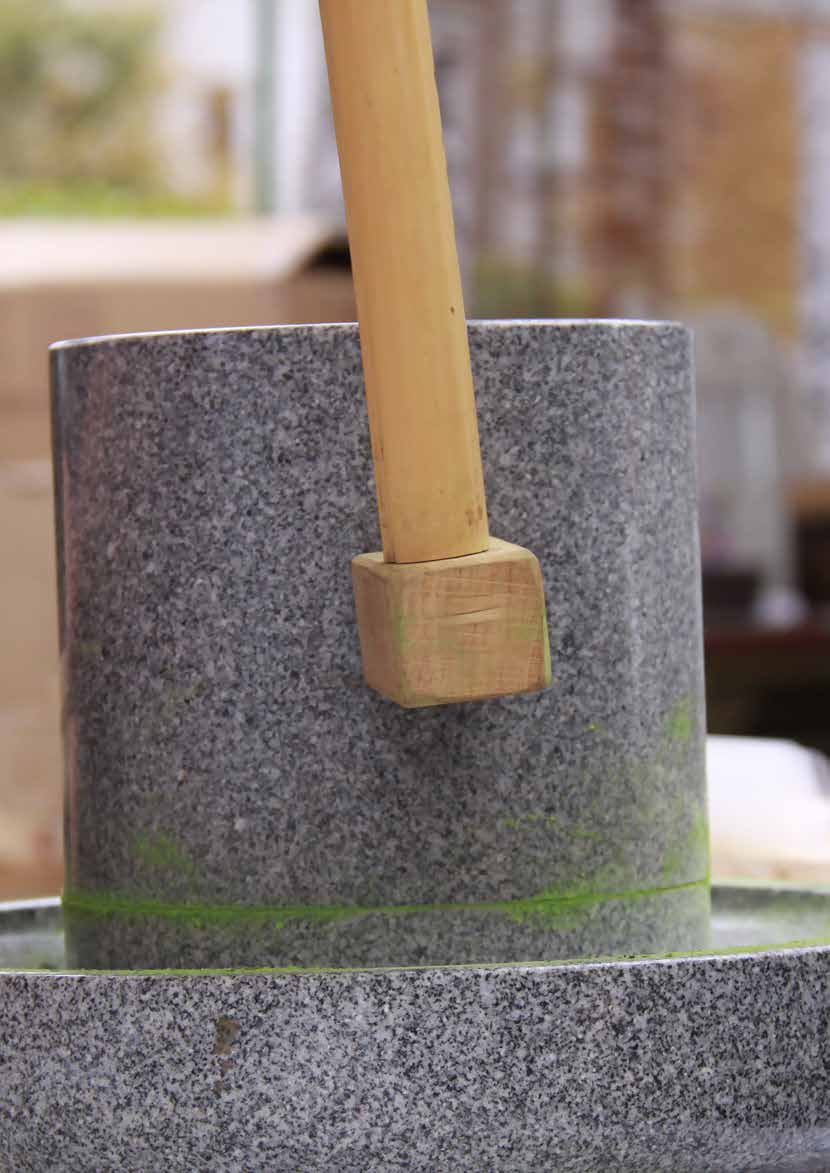
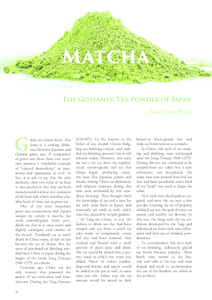 |
|
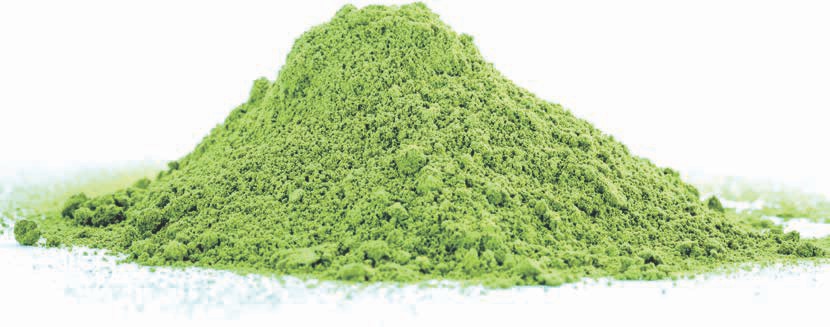
Green tea lovers know that there is a striking difference between Japanese and Chinese green teas. A comparison of green teas from these two countries presents a wonderful example of "cultural dissimilarity" in taste, aroma and appearance as well. In fact, it is safe to say that the only similarity these two styles of tea bear to one another is that they are both manufactured without any oxidation of the fresh leaf, which therefore classifies both of these teas as green tea.
One of the most important green teas synonymous with Japan's unique tea culture is matcha, the vivid, emerald-green, finely powdered tea that is at once sweet and slightly astringent and creamy in the mouth. Powdered tea is rarely drunk in China today, as leaf tea has become the tea of choice. But the roots of powdered tea drinking traveled from China to Japan during the height of the lavish Song Dynasty (960-1279) tea culture. Centuries ago, China was the only country that possessed the secrets of tea cultivation and manufacture. During the Tang Dynasty (618-907), Lu Yu, known as the father of tea, shaped China's fledgling tea drinking culture, and codified tea drinking protocol that is still relevant today. However, this early tea was a far cry from the sophisticated, terroir-specific leaf tea that China began producing centuries later. But Japanese priests and monks visiting China on diplomatic and religious missions during this time were enthralled by this wondrous beverage. They brought both the knowledge of tea and a taste for tea with them back to Japan, and eventually tea seeds as well, which were first planted in temple gardens.
In Tang-era China, it was the fashion to drink tea that had been scraped and cut from a small tea cake made of compressed, coarse leaf that had been steamed, then crushed and bound with a small amount of plum juice and dried. The tea would be placed into a pottery vessel to which hot water was added. Pieces of onion, jujubes, dogwood berries and spices would be added to the pot as well, in some cases just salt. Either way, the tea mixture would be served in dark brown-or black-glazed, low and wide tea bowls known as tenmoku.
In China, this style of tea steeping and drinking went unchanged until the Song Dynasty (960-1279). During this era, tea continued to be scraped from tea cakes, but a new refinement was introduced. Tea cakes were now pressed from leaf tea that had been powdered, and a kind of tea "mud" was used to shape the cakes.
New tools were developed to cut, grind, and sieve the tea into a fine powder. Learning the art of properly whisked tea was the goal of every tea master and wealthy tea devotee. In this way, the Song took the tea traditions developed by the Tang and elaborated on them with new refinement and their use of whisked, powdered tea.
To accommodate this new style of tea drinking, elaborately glazed tea bowls became popular. These bowls were narrow at the bottom and wide at the top, and were shaped and sized to accommodate the use of the bamboo tea whisk in the tea bowl.
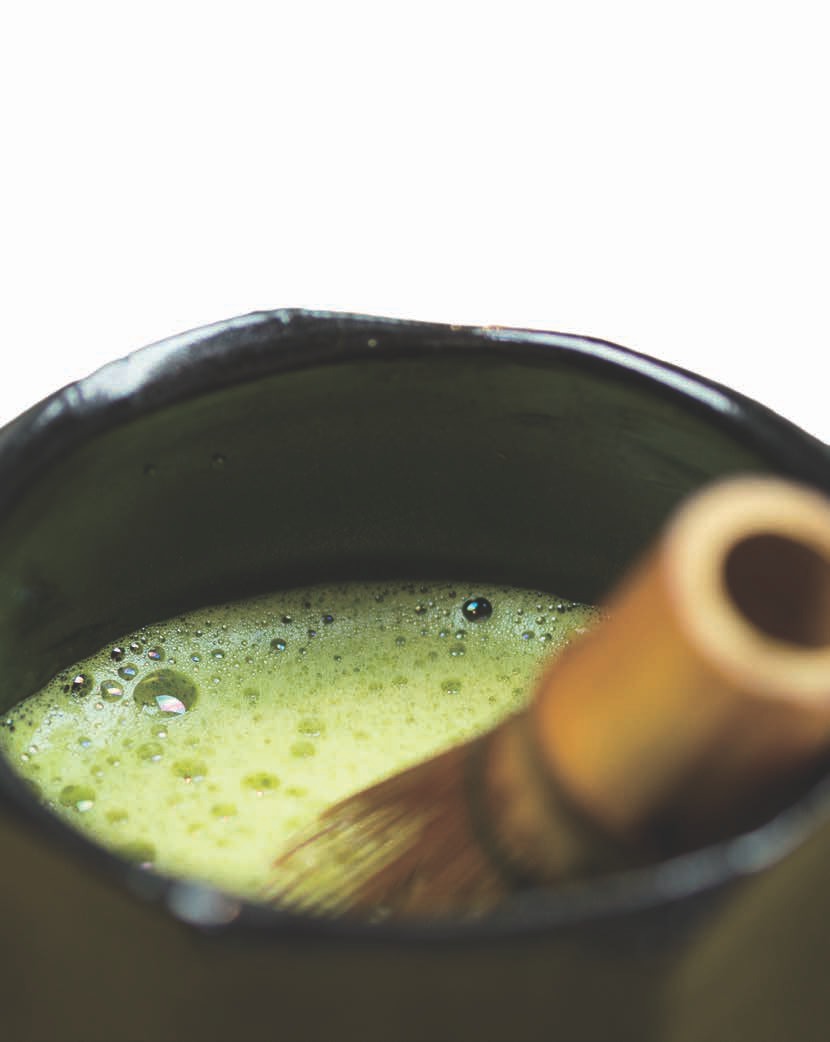
Unfortunately for the worldly Song, their love affair with tea and tea equipage came to a stunning end when China was overtaken by Mongol outsiders and Kublai Khan established his Yuan Dynasty (1271-1368).
Despite this unhappy turn of events for Song-era tea culture, the Japanese, familiar with Chinese tea preparation customs, were able to continue the practice of whisked, powdered tea drinking in Japan. The Japanese took a Chinese practice and re-shaped it to fit their cultural and aesthetic style. This tea-drinking method, combined with Japanese aesthetics, Zen meditation and the philosophical ideals of Wa Kei Sei Jaku (Harmony, Respect, Purity and Tranquility), ultimately led to a tea drinking experience that was shaped more by Japanese sensibilities and detail than by Chinese ways.
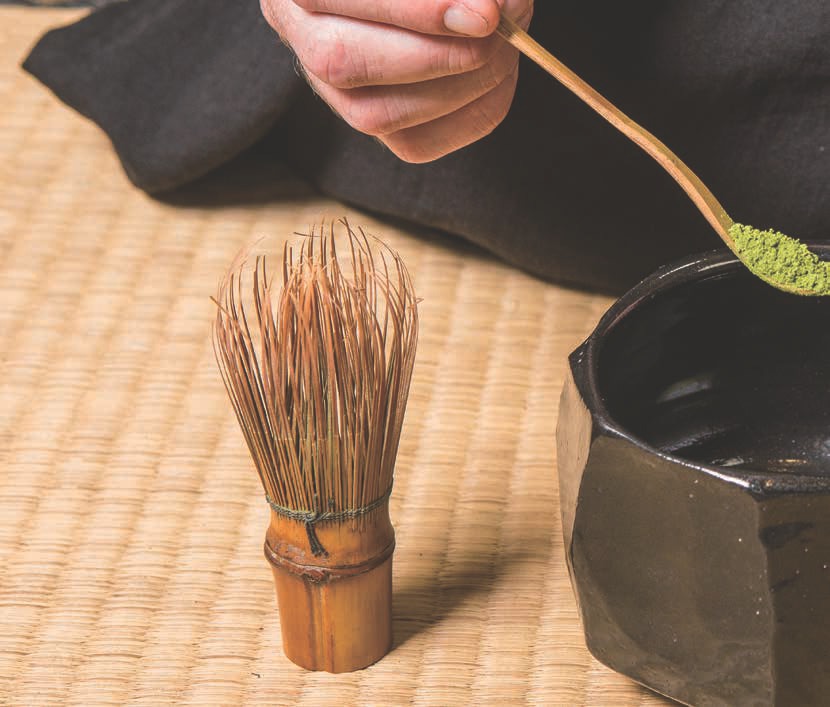
By the 16th and 17th centuries, four essential Japanese tea masters had each contributed to the philosophical underpinnings of the practice of making and drinking a bowl of whisked powdered tea and named it Chanoyu, the Japanese tea ceremony. Tea and tea drinking is central to the experience and practice of Chanoyu. In this intimate gathering, the tea master carefully uses a bamboo whisk and precise hand movements to prepare the whisked tea. The tea bowls, known as chawans, are large in size, can be glazed or slightly rustic in shape and texture, and are earthy in color and appearance. The most prized tea bowls are those that are hand-made by a potter. Although the generous proportions of these chawans require that guests cradle them in two hands while drinking, only three to four ounces of tea is prepared by the tea master for each guest.
As is true for all aspects of tea and tea culture in Japan, the cultivation and production of matcha powder is very specific and detailed, and the attention to quality is taken very seriously. As an outsider peering into Japan's tea culture, matcha embodies the essence of a simple thing that can take a lifetime to understand in all of its complexities and nuance.

Matcha is referred to as powdered tea, but matcha should by no means be thought of as simply ground-up leaf tea. It is a precise combination of leaf cultivation with fresh leaf processing and the blending skills of a tea master that results in powdered tea that possesses an astonishing array of invigorating tastes, a velvety texture and a rich, vivid, emerald-green color.
Matcha is manufactured from the fresh leaf of tea bushes that are grown in the shade under tented canopies, in a similar fashion to Japan's other exclusive tea - gyokuro. In fact, tea farmers who grow leaf for gyokuro nearly always pluck leaf for matcha as well. The difference between the cultivation and manufacture of these two famous shaded teas is slight but important, and it has to do with:
The tea bushes that yield these teas spend most of their spring growth cycle leafing out under a tented cover away from sunlight. After the first initial growth spurt in the spring, a trellis is erected over the tea bushes, and densely woven netting is draped over the trellis and secured. The simplest netting is made from dark, woven plastic; the most traditional and expensive netting is constructed of fine straw.
This arrangement, called a tana, covers both the top and sides of the trellis (it is roomy enough for tea pluckers to work inside) and the netting blocks roughly 90% of the sunlight from reaching the plants. The plants, nevertheless, still grow, and a peek under the netting reveals elongated leaf sets that have stretched towards the light.
The reason for shading the bushes is to increase chlorophyll production in the plants by reducing natural photosynthesis in the leaves. The extra chlorophyll changes the balance of the natural components of the leaf, but especially affects the proportion of:

This forced change in leaf chemistry yields soft leaves, and slightly astringent tea, with the sweet and buttery undertones that high-grade gyokuro and matcha are known for. Additionally, fine matcha contains a high degree of umami - the quality of rich mouthfeel, derived from the presence of certain amino acids, that is defined as the fifth element of taste, along with bitter, salty, sour and sweet. Although these are coddled tea bushes, a peek beneath the tana gives one a view into the odd world of plants that grow without the usual amount of light. These plants emit an eerie color due to the lack of sunlight, and their new growth is lankier and thinner than that of their tea bush cousins growing in the sunlight in traditional tea fields.
Gyokuro production occurs in the spring, and is followed closely by matcha production. Matcha is made from the spring-plucked leaf, which is deemed to have the best structure and flavor. When we visited Uji (Kyoto Prefecture) in May, one of the growers told us that he plucks the bud and the next two leaves when he is picking for gyokuro (for competition-grade gyokuro, only the bud is selected), but the bud and the next three leaves are plucked for matcha. He uses this extra, slightly older third leaf to "influence" the final flavor of the matcha.
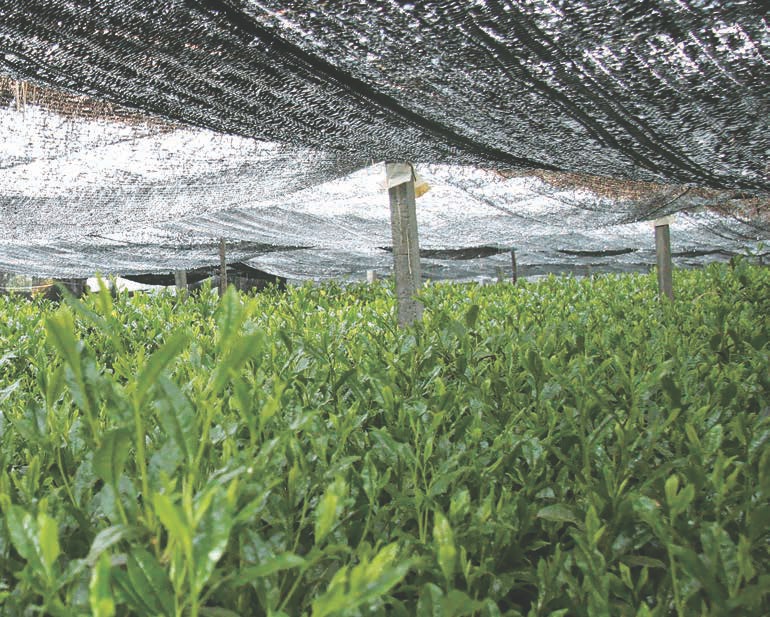
Most matcha producers make two primary types of premium matcha that are used in the Japanese tea ceremony: usacha and koicha. All tea ceremonies serve usacha, or thin tea, but some serve an additional, communal cup of koicha, or thick tea. When koicha is served, it is presented first in the ceremony and all guests take a sip from the bowl and then pass it to the next person. Only one chawan of koicha is made by the tea master, whereas each guest receives an individual chawan of usucha.
Koicha is made from the leaves of older tea bushes, and as a result, it is more expensive. A bowl of koicha is stronger tasting and more densely textured in the tea bowl - like thick, luscious cream. It is prepared with more tea and less water than usucha, and the tea and water are gently "kneaded" with a special whisk made for preparing koicha. These whisks have fewer bamboo tines (16-48 versus 72-120 tines for usucha whisks), which are thicker than the bamboo tines on whisks made for usucha. The reason is that koicha requires the surface of the tea to be thick and smooth, bright green and without any froth at all. Froth is okay with usucha, but not with koicha.
Once the fresh leaves are plucked, they are taken immediately to the tea factory. Here, the leaves will be processed into tencha, and then into matcha. The process for manufacturing tencha (and gyokuro) is slightly different from that used to make other Japanese green teas such as sencha. Some tea producers bring their semi-processed tea to a tencha factory; others utilize a traditional sencha factory that has been outfitted with the additional pieces of equipment necessary for tencha production.
Either way, as soon as the fresh leaf enters the tencha factory, it will be placed on a conveyor belt and pass through a steaming chamber. (All Japanese green tea is steamed in this manner.) This process softens the leaf, prevents oxidation, retains the natural leaf color, and begins the process of breaking down the cellular structure of the leaf.
After this, the leaf travels down the conveyor belt, where it will be blown vertically into tall, enclosed, vertical nylon cylinders and kept aloft by warm air. This is the primary drying step. After this, the leaves are cooled, spread flat on the conveyor belt, and passed through a horizontal drying oven. Unlike in sencha production, this leaf will not be rolled or shaped - it must remain flat throughout the entire process. From this point, the veins and stems of each individual tea leaf will be removed, and the remaining leaf will be chopped into uniform small pieces. What remains (after a final electrostatic cleaning to remove lingering bits of stems, etc.) is the heart-matter of the tea leaf, which is now called tencha.
At this point, the tencha can be vacuum-packaged and stored in temperature-controlled freezers until it is needed. The final step that turns tencha to matcha takes place in the grinding room. Here, the tencha is fed via a hopper into the center of a slowly-revolving two-piece granite grinding mill that pulverizes the leaf into a silky smooth powder. The mills are small and in grinding rooms, rows of them are lined up on work counters. In earlier days, the grinding mills were turned by hand. Today, the grinders are operated by means of a control panel, but they still move at a very slow speed in order to properly obtain precisely ground, micron-fine tea powder.
If the grinders operate too fast, the tencha will overheat, the delicate flavor of the tea will be lost and the silkiness of the powder will be compromised. Matcha producers operate the speed of their grinders so that they obtain no more than fifteen grams of matcha per hour, per grinder. So even with modern intervention, it remains a slow and laborious process. Additionally, periodic re-calibration of the grooves on the grinding side of the stones is required for the mills to grind precisely. This detailed work is carried out by craftsmen who ply their traditional hand-craft of adjusting and honing these stone mills using custom-made tools.
Matcha is produced in several regions of Japan - the town of Uji, near Kyoto city in Kyoto Prefecture, Nishio in Aichi Prefecture, Shizuoka in Shizuoka Prefecture and northern Kyushu Island.
Most tea companies produce several different grades/kinds of matcha, which they make from a careful blend of tencha from different tea farmers, different tea growing regions and different tea bush cultivars. Each matcha has a unique taste, fragrance, color and even particle size. Matcha producers create signature matcha blends for their clients based on the requirements of cost, flavor, color, fineness, and usage. Ceremonial grades of matcha are the most costly, while matcha to be used as a baking or cooking ingredient is considerably less expensive (and less tasty).
The most expensive matcha comes from Uji, the first tea gardens developed in Japan. Uji tea producers provide matcha to Japan's oldest, most venerable tea shops, to temples in Uji and Kyoto and to the established tea schools (Urasenke, Omotesenke, Mushanokōjisenke, Sohenryu and more), which teach the philosophy and skills of Chanoyu. For Chanoyu, each trained tea master chooses the matcha he or she prefers based on the taste of the matcha appropriate for the type of tea ceremony she or he will be conducting. Or perhaps they choose the matcha favored by the present or former grand master of the tea school where they trained.
In Japan, matcha is sold in sealed canisters of 20, 40, 100 or 200 grams. Because it is ground micronfine, matcha stales very quickly, so purchasing small quantities as needed insures that the tea will retain color, flavor and antioxidant benefit. Matcha ranges in price from modest offerings suitable for use in desserts ($8.00 or so for 20 grams) to the best ceremonial grades used in formal Japanese tea ceremonies and also drunk at home by matcha tea enthusiasts ($40.00-$150.00 for 20-40 grams).
Shopping for matcha offers a seemingly endless array of confusing names and choices. Matcha is sold not so much by place of origin, but by tea names that recall a season, a concept, a feeling or emotion, a celebration, or something lovely that is admired in nature (snow-covered pines, flying cranes, cherry blossoms, etc.). Or matcha may be selected and named by the grand master of one of the Japanese tea ceremony schools for its suitability to the philosophy of that tea tradition.
To add to the confusion, the same matcha packed in a twenty-gram or forty-gram-size tin might have a different name. Some matcha is packed and sold for seasonal use, such as matcha sold from early December to early January. And of course, there is matcha for koicha and matcha for usucha. So it is best to focus on what you want to use the matcha for, decide what your budget will allow and then ask for advice.
Matcha is not simply ground-up tea leaves. It is an essential practice for the intricate, vibrant, fascinating and delicious Japanese tea culture of yesterday and today. Matcha was the drink of Samurai and warrior-elite as well as monks and priests. Its adoption into Japan created the need for Japan to solidify its identity with Chanoyu and produce Japanese tea bowls and other tea ceremony vessels and tools with distinctly Japanese aesthetics and sensibilities.
The required decorative items such as calligraphy scrolls and chabana (simple flower arrangements) for use in the tea rooms, and lush landscape gardening on a small scale outside of the tea rooms. For the preparation of tea, this spawned the development of many tea items culled from Japan's most famous arts traditions: wood-fired pottery, bamboo utensils, cast-iron water kettles, lacquer tea containers and tiny tea ceremony sweets.
This was quite a feat for what some might say is just a simple cup of tea!

